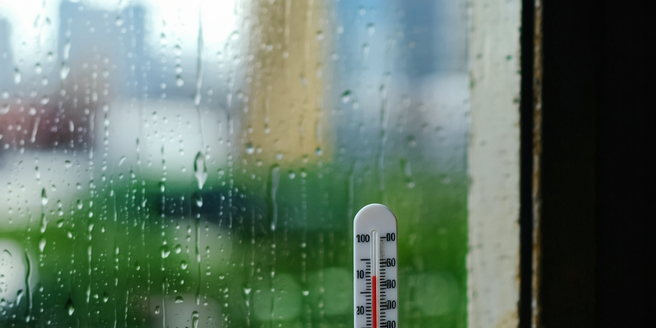
Understanding the Causes of Heatwaves
Heatwaves occur when high atmospheric pressure traps warm air close to the ground, preventing it from rising and dispersing. This phenomenon can lead to prolonged periods of excessively high temperatures that often last for several days. Climate change contributes significantly to the increased frequency and intensity of heatwaves by affecting weather patterns and raising average temperatures worldwide. Urban areas are particularly vulnerable due to the heat island effect, where concrete structures absorb and retain heat. Understanding these factors helps in predicting and preparing for heatwaves, allowing communities to take preventive actions to safeguard health and infrastructure. Moreover, identifying vulnerable populations, such as the elderly and outdoor workers, is crucial for targeted interventions and resource allocation to minimize the adverse effects and improve resilience during heat events.
Recognizing Symptoms of Heat-Related Illnesses
Heat-related illnesses occur when the body cannot properly cool itself, leading to various symptoms ranging from mild to severe. Early recognition is crucial for effective management and prevention of complications. Common symptoms include excessive sweating, weakness, dizziness, headache, nausea, and muscle cramps. In more severe cases, individuals may experience confusion, vomiting, fainting, or even seizures. Heat exhaustion involves the loss of fluids and salts due to excessive sweating and can progress to heat stroke if not addressed promptly. Heat stroke is a medical emergency characterized by a body temperature above 103°F (39.4°C), altered mental state, and potential organ failure. Immediate cooling and hydration are critical for affected individuals. Public awareness campaigns and education can equip communities to recognize symptoms early and take appropriate actions.
Staying Hydrated: Importance and Tips
Hydration plays a vital role in maintaining health, especially during heatwaves. Adequate water intake helps regulate body temperature, transport nutrients, and remove waste. During hot weather, increased sweating can lead to dehydration, which impairs physical and cognitive functions. It’s essential to drink water regularly, even when not feeling thirsty, and consume beverages that replenish electrolytes. Avoiding alcohol and caffeinated drinks is advised, as they can contribute to dehydration. Consuming hydrating foods such as fruits and vegetables also plays a part in maintaining fluid balance. Monitoring urine color can be an effective way to gauge hydration levels; pale yellow is usually an indicator of adequate hydration. Educating individuals on the importance of hydration can significantly reduce the risk of heat-related complications.
Effective Cooling Techniques for Your Home
Keeping your home cool during heatwaves is crucial for comfort and health. Simple measures can make a significant difference in indoor temperatures. Utilizing fans and air conditioning is effective, though ensuring AC units are serviced regularly enhances efficiency. Utilizing reflective curtains or blinds can reduce heat entering through windows. Closing windows during the day and opening them at night can exploit lower nighttime temperatures. Creating cross-ventilation by strategically placing fans can help circulate air. Additionally, limiting the use of heat-generating appliances during the hottest times can help maintain lower indoor temperatures. Insulating your home properly also plays a role in keeping it cooler in summer and warmer in winter. Employing these techniques can help manage indoor heat levels, enhancing comfort and safety.
Protective Clothing and Sun Safety Practices
Wearing appropriate clothing is a simple yet effective strategy to mitigate heat exposure during outdoor activities. Clothing made from light, breathable fabrics like cotton or linen allows for better air circulation and evaporation of sweat, facilitating natural cooling. Loose-fitting garments are preferable, as they do not restrict air movement. Light-colored clothing reflects sunlight, while wide-brimmed hats provide shade to the face and neck. Using broad-spectrum sunscreen with a high SPF protects exposed skin from harmful UV rays. UV-filtering sunglasses protect eyes and the surrounding skin. Limiting outdoor exposure during peak sun intensity, usually between 10 AM and 4 PM, can reduce the risk of heat-related illnesses and sun damage. Educating individuals on these preventive measures promotes sun safety awareness.
Planning and Preparing for Heat Emergencies
Preparation is key to effectively manage heat emergencies and minimize their impact. Developing a heat emergency plan involves understanding local warning systems and identifying community resources, such as cooling centers and emergency hotlines. Having an emergency kit with essentials, including water, non-perishable food, medications, and first aid supplies, is crucial. Ensuring that vulnerable individuals have access to necessary resources during a heatwave is vital. Communities should promote awareness and educate residents on recognizing symptoms of heat-related illnesses and appropriate responses. Establishing communication channels for disseminating information can help in timely evacuation or relocation, if necessary. Collaboration with local authorities and emergency services can enhance preparedness efforts, ensuring efficient response during heat events.
